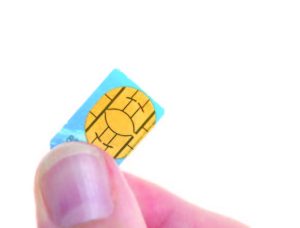Kids…They Swallow the Darndest Things
Few moments are more frightening to a parent than the realization that their child may be choking on, or have swallowed, a foreign object. Sadly, every five days a child in the U.S. dies in a choking incident, almost always involving food, toys or coins. Choking is especially common in children 4 years old and younger. Thankfully, the vast majority of incidents are resolved by vigilant parents and quick-thinking doctors and nurses. As an ER physician, you never know what you’ll find when you ask a young patient to “open wide.”
Sir Isaac Newton is famous for saying, “What goes up, must come down.” Is the opposite true?
Although I make no claim to being a world-famous physicist, I can tell you with some authority that, no, the opposite is rarely true. Once something goes down a kid’s throat, it may require a visit to your local ER.
Is coughing and wheezing in a baby or toddler usually an upper respiratory issue—such as a cold or asthma—or should parents pay closer attention?
You should pay closer attention, because the problem could be the result of an ingested foreign body. Just because a child isn’t choking per se, it doesn’t mean something’s not stuck down there. For example, one morning, a father rushed his 18-month-old son into our ER coughing and wheezing. I took the child from the dad’s arms and attempted to lay him flat on a stretcher. The child refused to lay flat. He would only sit upright. I tried again.
The child began to choke and cough. The dad said, “See that? He is coughing and wheezing again.” A quick examination of the child’s eyes, ears and nose was normal.
So what was the issue?
While a nurse held the child’s head steady, I depressed his tongue and there it was: a tiny gold-colored, rectangular object lodged in his airway. We sat the child upright and I used alligator-forceps to extract the item. It was a SIM card from his father’s cell phone. Only then did the father put it all together—he realized that his son had been teething and sucking on his cell phone and had accidentally ingested the SIM card. What the father had heard was actually not wheezing. It was stridor, which is an upper-airway obstruction at or above the level of the vocal cords.

www.istockphoto.com
What other objects do you see fairly regularly in the ER?
Ingested foreign bodies come in many different shapes and sizes. Some of the most common include coins, button batteries, regular batteries, small toys that contain magnets, plastic hair beads, crayons, safety pins, paper clips and hairpins. The ingestion of button batteries, which are often lithium batteries, is a true emergency and could be fatal. Button batteries can be found in common items such as watches, small toys, cameras and children’s sound storybooks, among other things.
What’s the procedure involved in dislodging a button battery?
Once a patient has presented to the ER with this type of ingestion, the ER doctor must take an x-ray to make certain that it is not in the esophagus. The caustic within the button battery can erode the esophageal wall and cause a severe, life-threatening infection within the thoracic (chest) cavity. The treatment is emergent retrieval of the button battery via an endoscopy, performed by a Gastroenterologist. The main point here is if you think your child has ingested a button battery, do not wait. Bring your child to the ER immediately for evaluation.
What happens when a child actually swallows a small object and it passes through the esophagus and into the stomach?
The response depends on the object. An 8-year-old girl presented to the ER one evening on the night of her First Holy Communion. She had gone to bed and then, a half-hour later, ran to her mother in fear stating, “I don’t want you to yell at me, but I think I lost my St. Elizabeth metal that Uncle Joe gave me today for my Communion! I have the chain, but I can’t find the medal.” After a thorough search of the bed and room, her parents grew suspicious and feared that she had in fact swallowed the medal by accident, but she was afraid to admit the truth.
Was that the case?
It was. After an x-ray of the child’s chest and abdomen, I discovered that the medal had already passed through the esophagus and into the stomach.
Did she confess—no pun intended?
Yes, in private, I again asked the child what had happened. She spilled the beans: “I was hanging upside down off the side of my bed, flipping the medal in and out of my mouth with my tongue…and then it came off of the chain! I got scared and accidentally swallowed it when I tried to get back up onto my bed. Please don’t tell Mama!”

www.istockphoto.com
Did it pass through her system?
Yes. In general, once coins, medallions, etc., have moved beyond the esophagus, they will pass freely through the bowels. If a child has no symptoms after such an incident, a follow-up x-ray 2-3 days later can show us whether or not the coin has passed through the bowels. If a child experiences vomiting or abdominal pain, however, a repeat examination is needed, complete with x-ray. If the object is stuck, then it may have to be removed.
ALSO…
People with specific medical needs should have a wristband that would alert doctors and nurses of that special need. It might even save a life.
—Rita B.
We use different color-coded wristbands for certain (but not all) patients, Rita. It’s actually part of the Critical Care Committee’s playbook at Trinitas. Expanding this to include a wider range of conditions is something we are always looking at.
—John D’Angelo, DO
Editor’s Note: John D’Angelo, DO, is the Chairman of Emergency Medicine at Trinitas Regional Medical Center. He has been instrumental in introducing key emergency medical protocols at Trinitas, including the life-saving Code STemi, which significantly reduces the amount of time it takes for cardiac patients to move from the emergency setting to the cardiac catheterization lab for treatment.
Do you have a hot topic for Dr. D’Angelo and his Trinitas ER team? Submit your questions to AskDrD@edgemagonline.com





